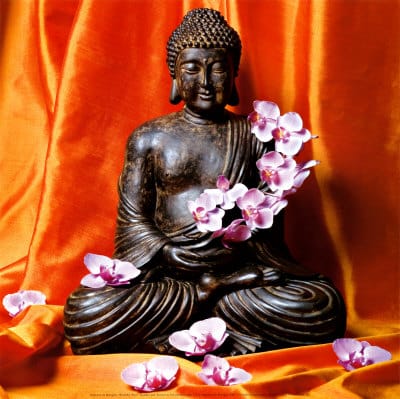- Most Buddhist devotions are not performed in a temple, instead people have a place of worship in their homes
- The temple is usually reserved for important celebrations
- Puja – showing reverence for holy beings by bowing, making offering and chanting (e.g. showing reverence for a Bodhisattva – a person
 who has attained Nirvana but chooses to be reborn to help others on their path to enlightenment)
who has attained Nirvana but chooses to be reborn to help others on their path to enlightenment) - Buddists bow 3 times before the Buddha in recognition of the 3 Refuges – the Buddha, the dharma (the path) and the sangha (companions and teachers)
- Flowers are often used as an offering because they fade and wilt – represents impermenence
- Lighting a candle or lamp is symbolic of Buddha’s enlightenment
Meditation
- Meditation leads to wisdom, which leads to the end of suffering
- Purpose of meditation is to improve concentration, calm the mind, and clear the mind of improper thoughts (greed, hatred, ignorance)
- Meditation is an essential practice for nuns, monks, lay people and novices (nuns and monks in training)
- Leads to insights into truth, inner peace, which turn into compassion and humility
- But, you need the right environment and practices:
- Lotus posture – crossed legs and hands – hands on feet, feet on top of thighs
- Back is straight
- Tounge touches the back of the upper front teeth
- Eyes are downcast and partially closed
- Concentrates on breathing and the movement of the diaphram
- Focus on an idea or object
Mantras
- Symbolic phrases chanted by Buddhists, e.g. “Om Mani Padme Hum”, or “Hail, the jewel in the lotus” is the mantra of Avlokiteshvara, a Bodhisattva of compassion and protector from danger
- Anyone who recites this will be saved from all dangers
